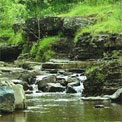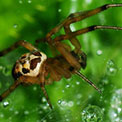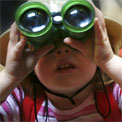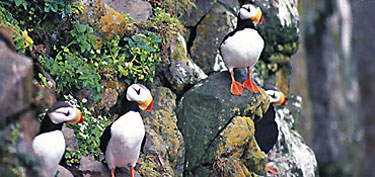UK Biodiversity Portal
Explore the biodiversity of the UK
Explore the wonderful diversity of British wildlife in this UK Biodiversity Portal. There are thousands of species living on our shores, in woods and fields, and in the urban environment as well, so you can explore biodiversity wherever you live.
Learn more about wildlife with our easy-to-use identification guides and take part in national surveys, forums, fun activities for kids and more in these pages.

Why is biodiversity important?
Nature provides us with food and drink, clothes, medicines, building materials, and much more. However, it faces many threats. Habitat loss, pollution, over-use of resources and climate change are some of them.
Find out more about the biodiversity of the UK and why it is important to preserve it.
Find out more about biodiversity
Researching biodiversity

Museum scientists study UK biodiversity, as it is today and how it was in the past. This gives them information to compare with future measurements of biodiversity.
They study species as diverse as algae, insect miners, and Loch Ness worms.
Biodiversity research at the Museum
Take part in a survey
To help with scientific research you don't have to work in a lab. Just visit your garden, local park or the seashore and you can take part in a national survey, like the urban tree survey or the Big Seaweed Search. Your results will help scientists to find out more about the distribution of UK species.
Find out more
-

Identification guides and keys
How do you tell a hairy-footed flower bee from a red-tailed bumblebee, or a chestnut worm from a compost worm? Find out in the Museum's identification guides.
-

UK biodiversity collections
The Museum is home to over 70 million specimens, including many from the UK. Find out more about the record of UK biodiversity in the Museum's collections.
-

Identification enquiries
Identify wildlife in your local area by asking questions in the forum, following our identification guides or contacting the Museum.
UK tree identification app
Identify UK trees with Leafsnap, our free app for iPhone.
The app offers leaf recognition technology along with information and high-res images for 156 tree species.

False widow spider guide
Museum expert Stuart Hine provides identification tips and debunks some of the myths surrounding the false widow spiders.
Visit the Centre for UK Biodiversity

With specimen collections and specialist staff who can help you identify UK wildlife, the Centre for UK Biodiversity is the Museum's hub for amateur naturalists as well as nature societies.
Watch the video to meet staff and see the CentreYoung naturalists

Are you interested in nature and under 16 years old? Send us your drawings and wildlife photos, go walking with woodlice, follow the butterfly life cycle, and much more.


